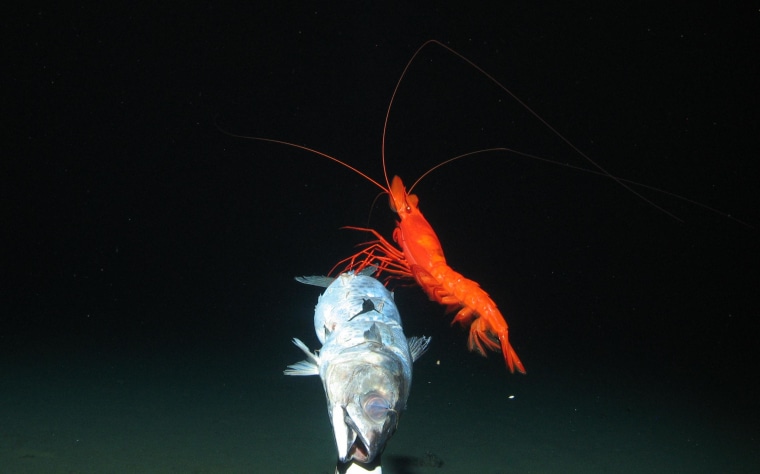/ Source: Live Science
A crushing dive into the ocean's darkest realms has revealed surprising differences among the marine life that populates the Pacific Ocean's deepest depths.
Researchers from the University of Aberdeen in Scotland discovered the deep-sea diversity while exploring the South Pacific's New Hebrides trench in November and December 2013. Curling around the islands of Vanuatu and New Caledonia north of New Zealand, the New Hebrides trench drops more than 25,000 feet (7,600 meters) below the ocean surface.
Via remotely-operated camera, the research team found an unusual community of fish and prawns living at depths down to 23,000 feet (7,000 m). The New Hebrides creatures were surprisingly different from those discovered by earlier expeditions in other Pacific trenches, the researchers said.
"What we found was an entirely different deep-water fish community," expedition leader Alan Jamieson, a marine biologist at the University of Aberdeen, said in a statement. "Fish were surprisingly few in number and low in diversity and not at all what we expected."
The ocean's most abundant deep-sea fish, the grenadier, never appeared during the expedition's 27 dives (all between depths of 6,500 to 23,000 feet, or 2,000 to 7,000 m). Instead, cusk eels, a type of fish, and bright red prawns were the most common marine life in the New Hebrides trench. Both creatures are rarely found in other trenches, the researchers said. Video captured during the dives shows the 3-foot long (1 m) cusk eels and prawns chomping on bait. [Gallery: Creatures from the New Hebrides Trench]
— Becky Oskin, Live Science
This is a condensed version of a report from LiveScience.com. Read the full story.
Email Becky Oskin or follow her @beckyoskin. Follow us @OAPlanet, Facebook and Google+. Original article at Live Science's Our Amazing Planet.
